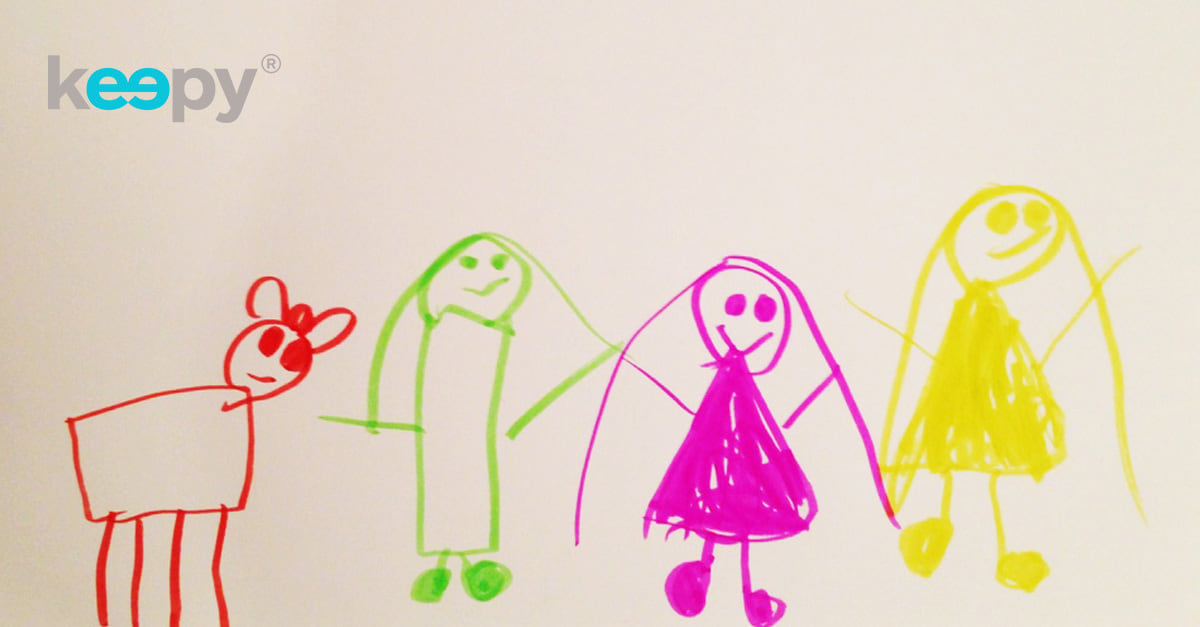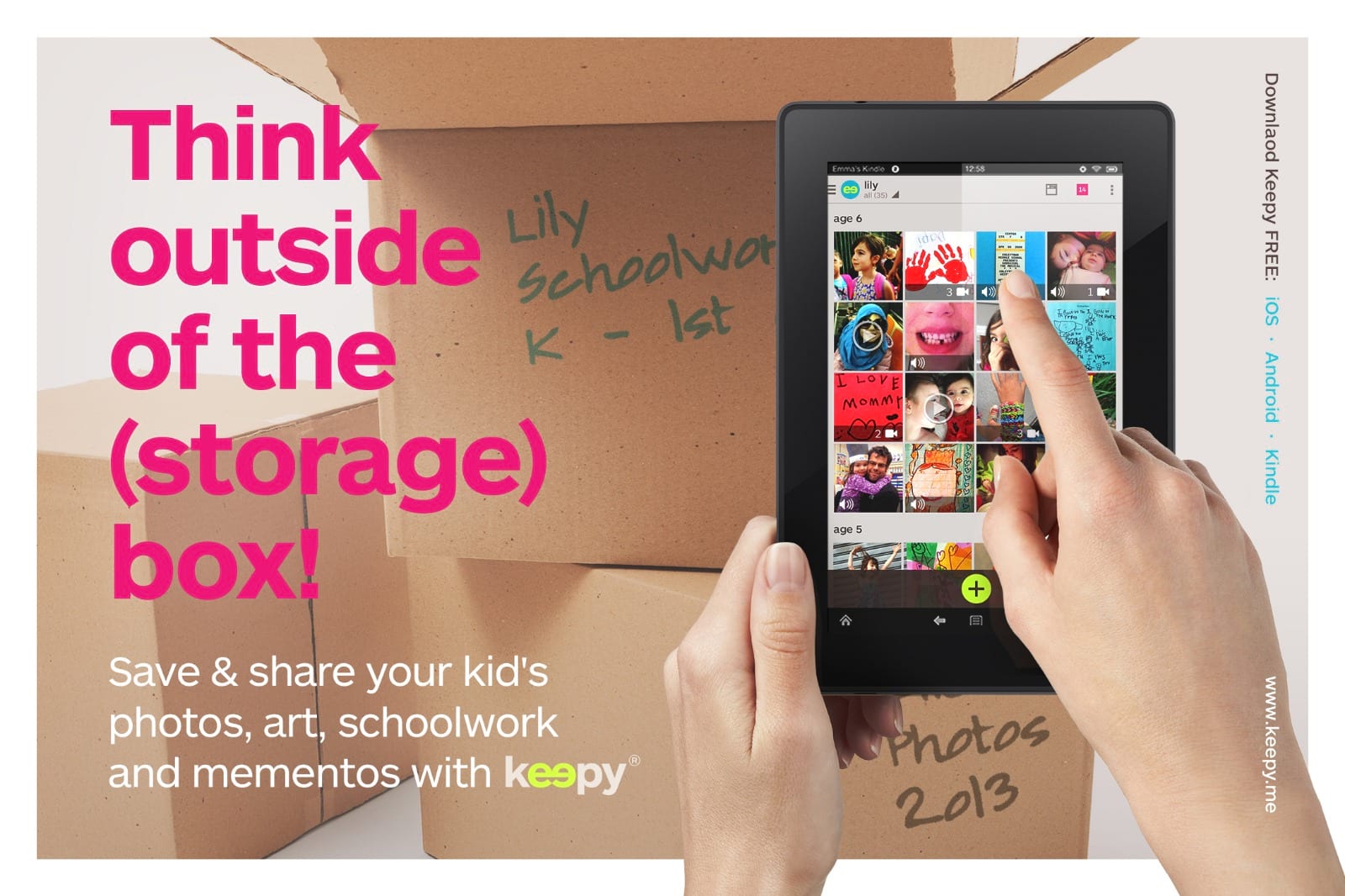Declutter Photos and What to Do With Your Child’s School Artwork, Images, and Pictures.
Precious boxes or folders, or even family albums, passed down generation after generation. The assortment of your child’s artwork from school, dating back to kindergarten and earlier. Trophies, macaroni noodles, watercolor art, and crepe paper designs filled with abstract images. All those picture-day photos from school. Does this sound familiar? Perhaps its time to declutter photos and other items.
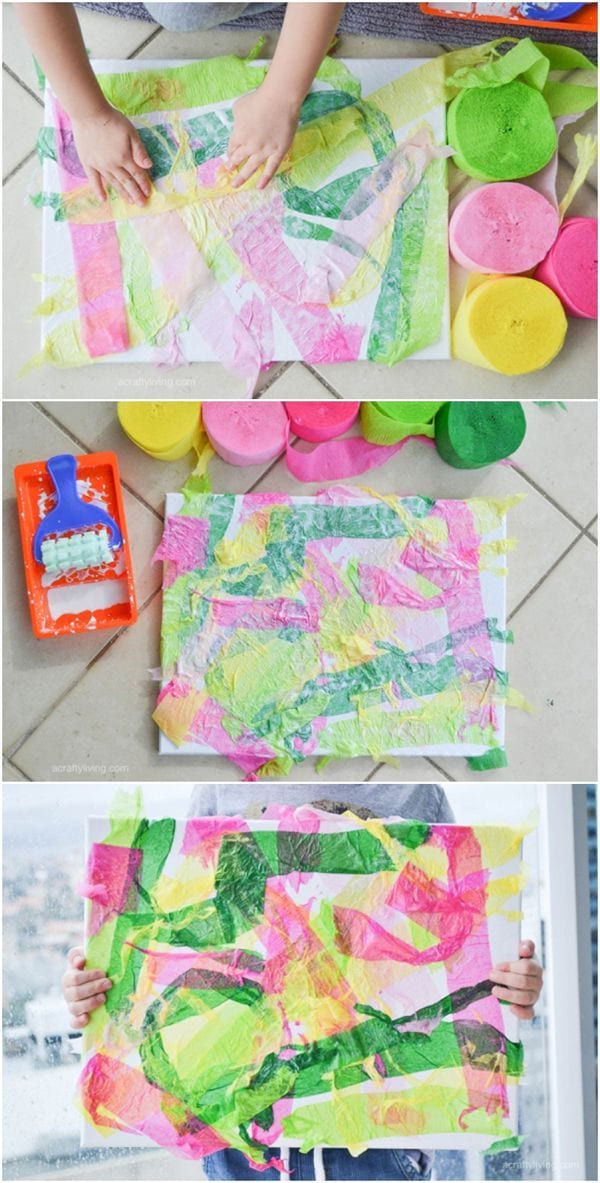
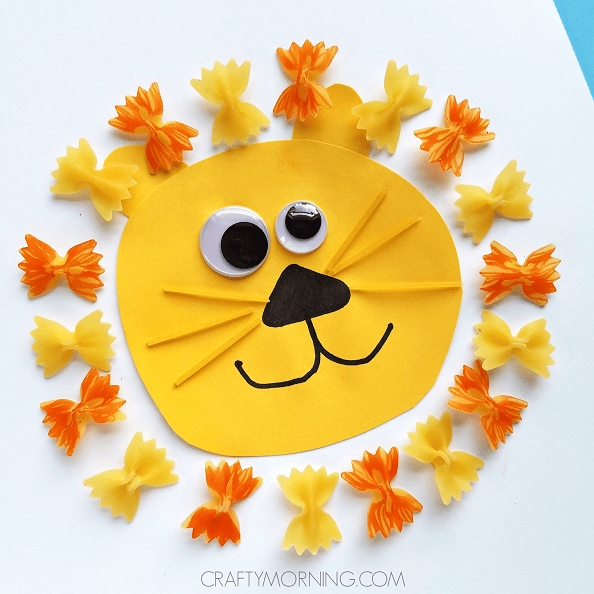
All these precious keepsakes, images, pictures, and art add up over time. They’re either stored in the garage, numerous boxes stacked one over the other. Perhaps some of these sentimental items are hanging on the fridge, with no room to add more. Maybe these photos and artwork are collecting dust over by the storage shelves. Or let’s admit, most of them perhaps end up in the trash. The need to declutter photos and other artwork is more pressing than ever.
In one way, having these memories is important to us because these are unique to our family. They’re memories of our loved ones, and having these keepsakes offers a sense of security. We can look at these images, dwell in our recollections, experience joy, and then continue on with our lives.
On the other hand, these photos, schoolwork, artwork, and sentimental items pile up. Are we really going to view the thousands of digital photos we have? Or the 50+ pieces of artwork drawn by our child each year––100+ if we have two or more children.
Decluttering photos and our child’s school artwork does not mean that we have to throw away all these items, or banish them forever to the fireplace or dumpster. The decision to declutter photos means taking a conscious look at our treasured memories, deciding what to consciously save and what to consciously let go of. Decluttering photos is a process of curation, which involves picking out the most important photos that will be stored in the photo album, or the most memorable artwork of our children. It’s what our parents did when they developed and placed photos into the album that would become filled with our childhood memories.
Declutter Photos: Why is Decluttering So Important?
There’s a reason that the decluttering movement has become so important in the last decade. People around the world are making the conscious decision to sort through their everyday digital photos and children’s artwork. For some, decluttering is part of the movement known as minimalism, which hinges on some of the most well-known lessons of Buddhism: (1) live consciously (2) live by focusing on what’s important (3) and do not engage in excess.
Minimalism means letting go of consumerism, not caring as much for material possessions, saving time, living without debt, and bringing more meaning to life. If done right and regularly, the decluttering process can truly save money, time, and bring joy.
Other minimalists may not acknowledge the movement’s ties to Buddhist principles, but the leader of the popular decluttering movement, Marie Kondo, says that decluttering brings mindfulness, which brings more joy––a core tenet of Buddhism. Mindfulness means that you “keep only things that speak to your heart” because doing so will make “your life better if you own fewer possessions.”
Where Did Decluttering Come From? Explanation #1
Organization and decluttering rest on the same principles of minimalism in art. Not surprisingly, the same principles that made minimalism popular are inherent to the practice of decluttering. For this reason, the decluttering trend may be an offspring of the art movement, which flourished in the 1950s. As an aesthetic movement, minimalist art represented the principles of order and simplicity. Minimalism “does not pretend to be anything other than what it is,” meaning it does not like illusion, complexity, and clutter.
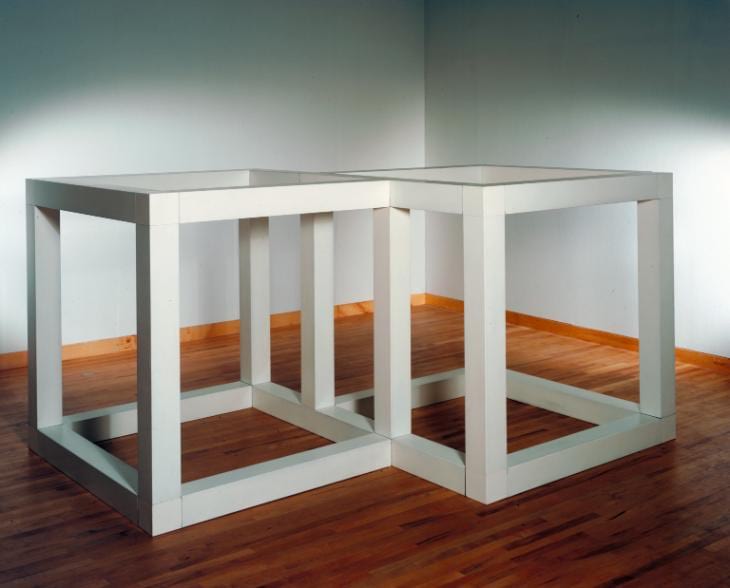 Sol LeWitt, Two Open Modular Cubes/Half-Off, 1972
Sol LeWitt, Two Open Modular Cubes/Half-Off, 1972
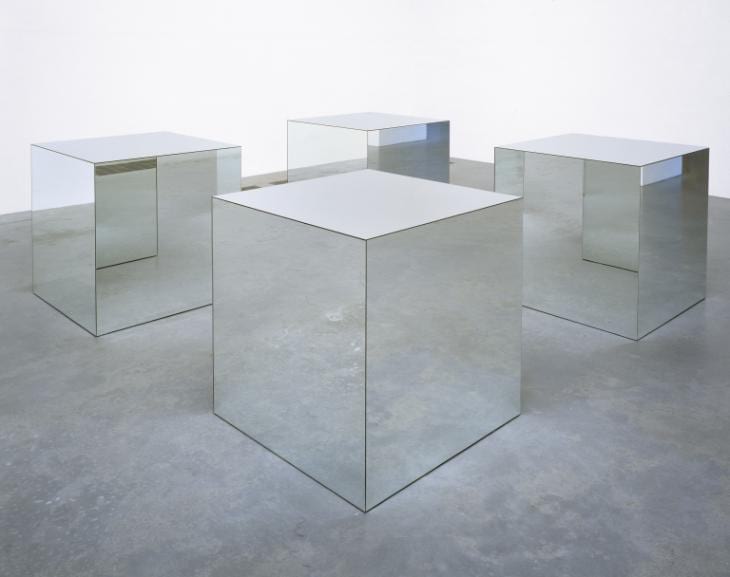
Robert Morris, Untitled, 1965
Where Did Decluttering Come From? Explanation #2
The popular roots of decluttering go back to Marie Kondo, who spearheaded the decluttering and tidying movement around the world. Kondo now has a global following, and she’s known as the tidying expert. She got her start with the help of a Japanese publisher specializing in the self-help and business genres. With the publication of her book, The Life-Changing Magic of Tidying Up, which arrived in the U.S. around 2014, Kondo established herself as the leading expert on decluttering.
Kondo’s method, known as the KonMari Method, is a collection of six rules that emphasize the lessons of tidying up. They include:
- Commit yourself to tidying up
- Imagine your ideal lifestyle
- Finish discarding first
- Tidy by category, not by location
- Follow the right order
- Ask yourself if it sparks joy
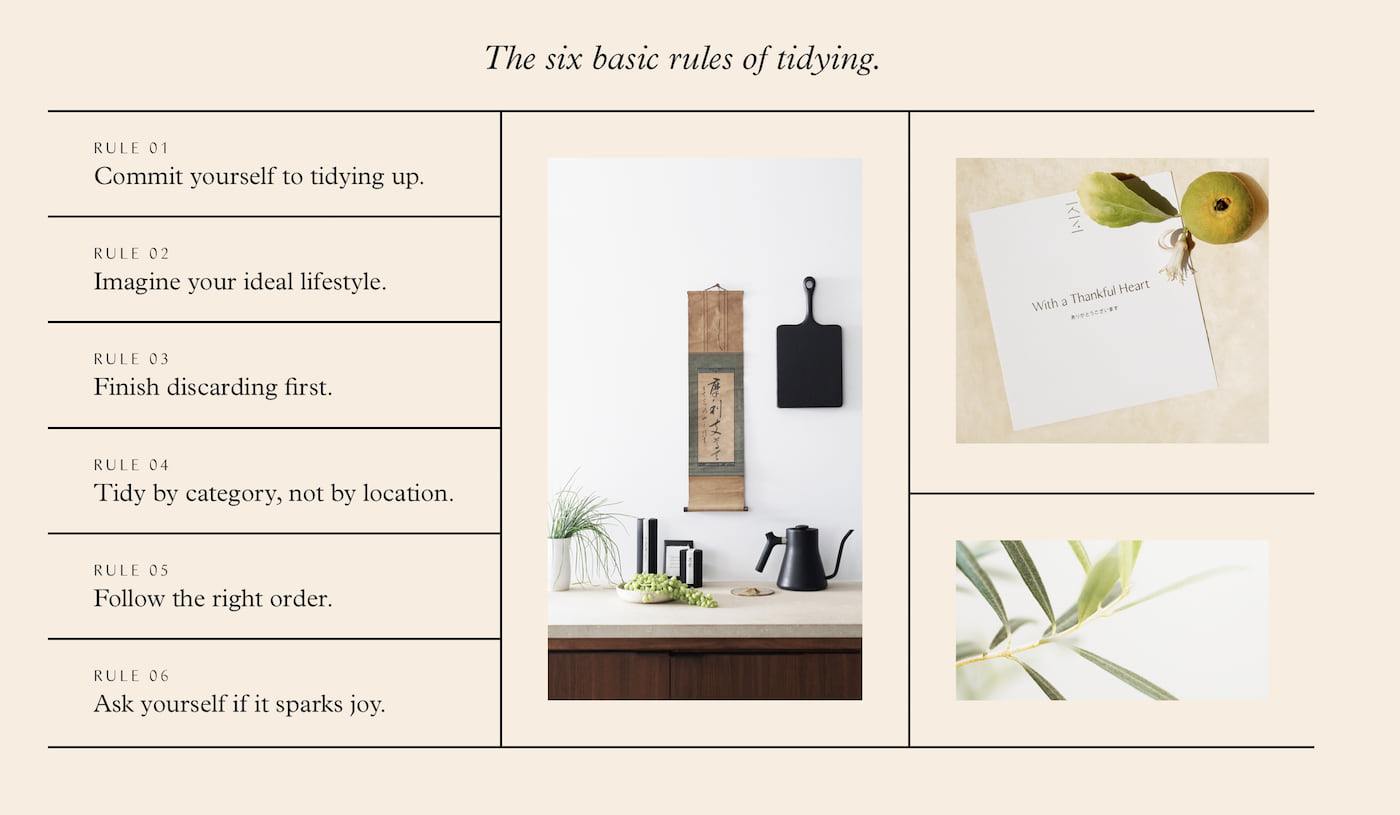
Minimalism for the Digital Age: Setting A Routine

In today’s age, minimalism and the KonMari method are great places to start, but they don’t go far enough, since tidying up is an event that takes place once a year. In the digital age, clutter is both physical and digital. With the advent of smartphones, we’re taking more digital photos than ever.
Today we use our smartphones to photograph our children at school, home, and at performances. The many pictures that come from school also add up. Add in the family keepsakes and your child’s artwork and schoolwork, and we realize we have a lot of clutter building up. How we declutter digitally and physically is no longer about tidying up but creating a weekly routine to manage all these memories.
Think of Decluttering as an Ongoing Process, Not a Cleanup Process
An ongoing process, rather than a cleanup process, means that you are not allowing your clutter to build up. Decluttering once a week or twice a week ensures that all your keepsakes are organized and shared with family members on a periodic basis.
If you have not decluttered in a long time, the KonMari method is a great start. But to truly manage our digital photos and our children’s artwork and schoolwork, it’s vital that our decluttering activities form into a weekly routine-––like watering a plant, or brushing our teeth. How you set this routine is a conversation you can have with your partner, assigning various tasks to each parent. If you’re on the same page, it makes coordination and organization much easier.
Taking Actionable Steps: Declutter Photos and Your Child’s Artwork, Schoolwork.
Keeping in mind the principles of the minimalist, tidying, and decluttering movements, here’s how you can apply these tactics to your everyday life to reduce sentimental clutter. Remember that you’re not alone in this journey. What to do with artwork and photos is a pressing question for parents around the world––and it’s not only a seasonal phenomenon, since school terms begin in varying months. In Australia, back-to-school begins in late January. Brazil––in February. China––in early September. And Japan––in April.
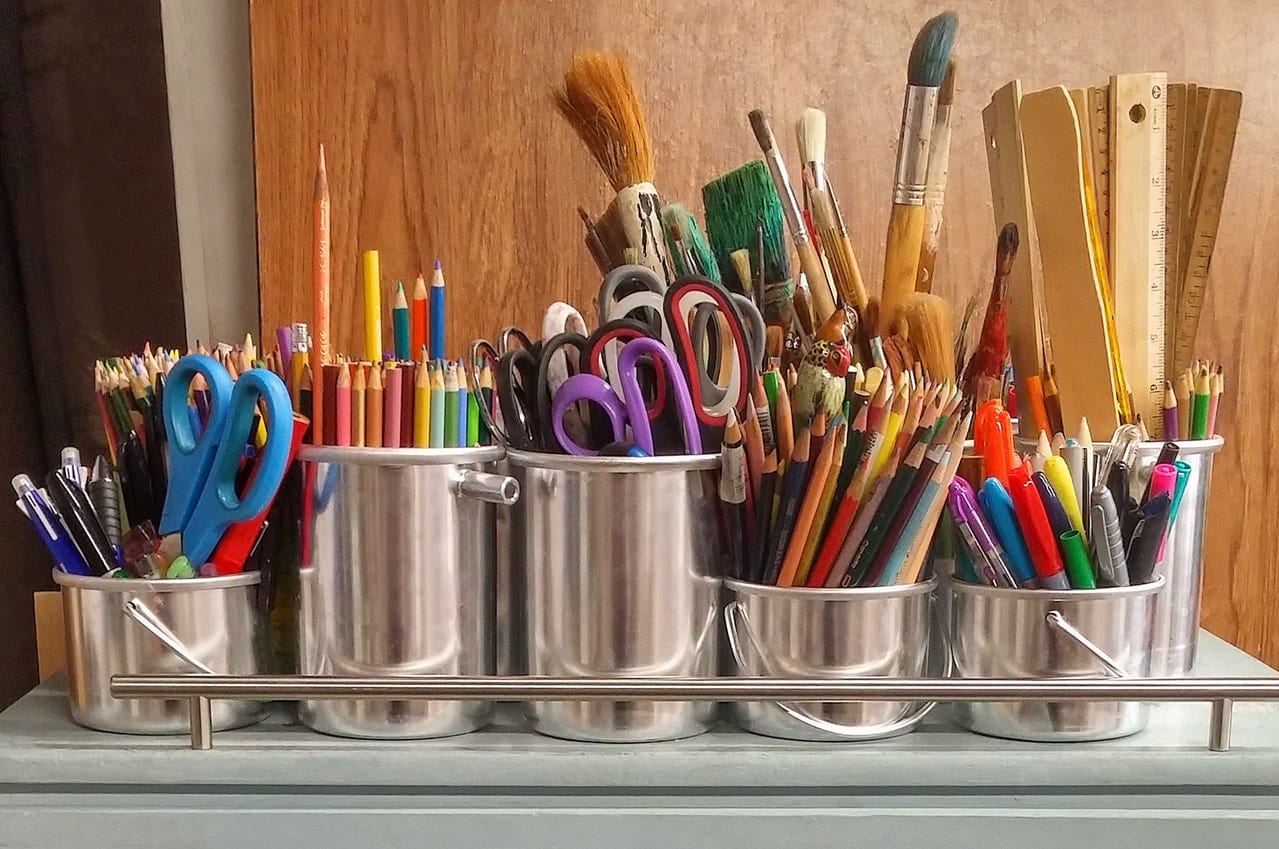
Back-to-school art, end-of-school art, and during-school art accumulate for parents all over the world and at different times. It’s important to set a plan before the school year begins. Since artwork plays a defining role in the social and cognitive development of children, you can expect that your child will bring home at least 1-2 art projects per week, resulting in about 36-72 art projects during the school term. Plus all those photos from school? Time to declutter photos and artwork!
Have a System for Your Child’s Schoolwork and Artwork––the Keepy Way
Whether you’re a parent or co parent, setting up a system is the way to go. If your child brings home 2 pieces of artwork or schoolwork, you may decide to keep one and upload the other to Keepy. Once uploaded, the 2 pieces of artwork can then be stored away.
Having a storage system also ensures order. For each new school term, try setting up an organizer. You can have several folder tabs for each type of activity: schoolwork, artwork, tests, and pictures. By having a storage system, you ensure that all your child’s schoolwork is organized on a weekly basis. At the end of the year, you can sort through those memories and decide what to keep, what to throw away, and what to hang on the refrigerator (if you have not already done so).
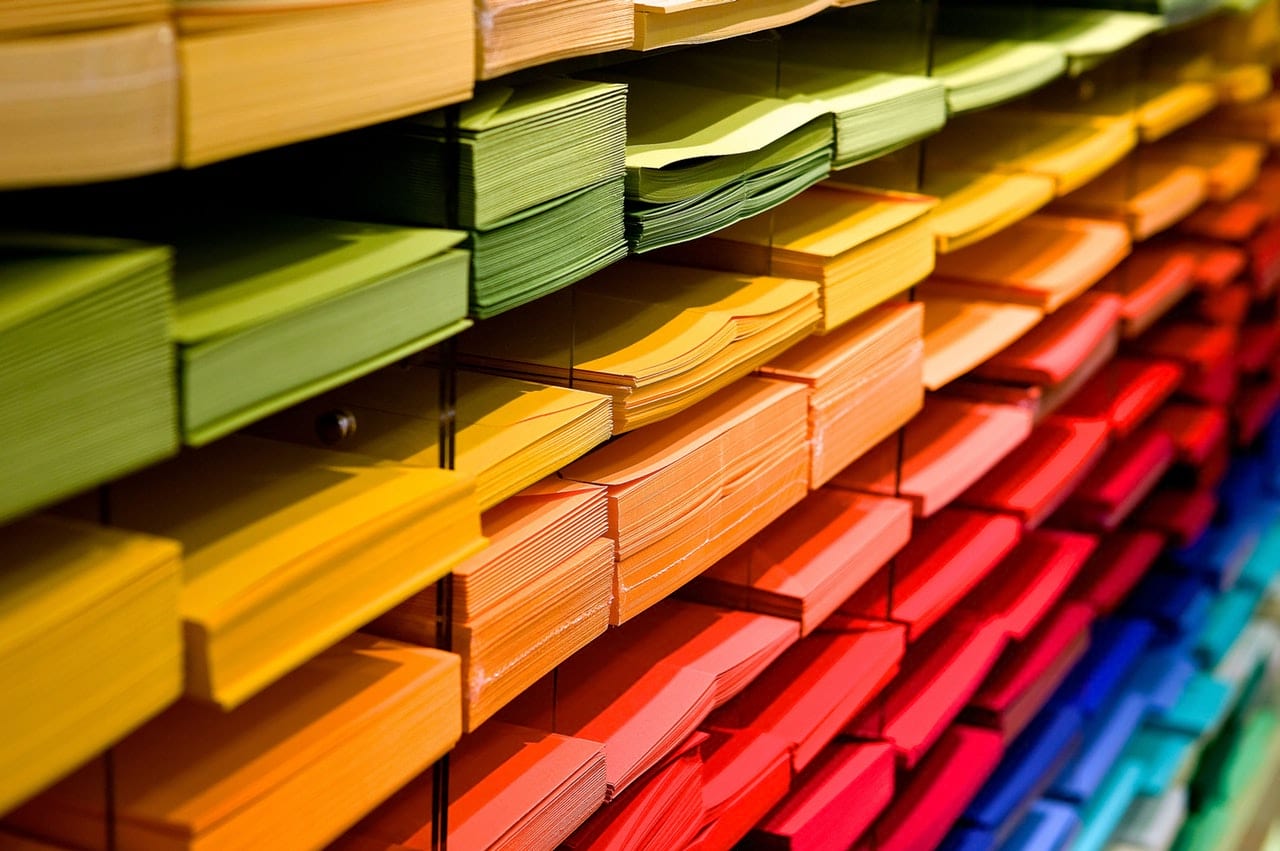
With Keepy’s app, you have more options available to you in your decluttering toolbox. Keepy allows you to organize, share, and save your child’s photos, artwork, and schoolwork digitally. This option makes it easier to part with physical copies of your child’s art while preserving them with Keepy’s secure digital app. Plus you’re able to declutter photos both physical and digital.
Here’s a suggested routine to try: each week, make sure to photograph and upload the most memorable projects to Keepy. Tag them, add a description, and share with family. It’s much easier to do this on a weekly basis, rather than spending time uploading numerous projects at the end of the year. Uploading to Keepy means that your entire family can view and appreciate your child’s artwork; it also saves you time at the end of the school term.
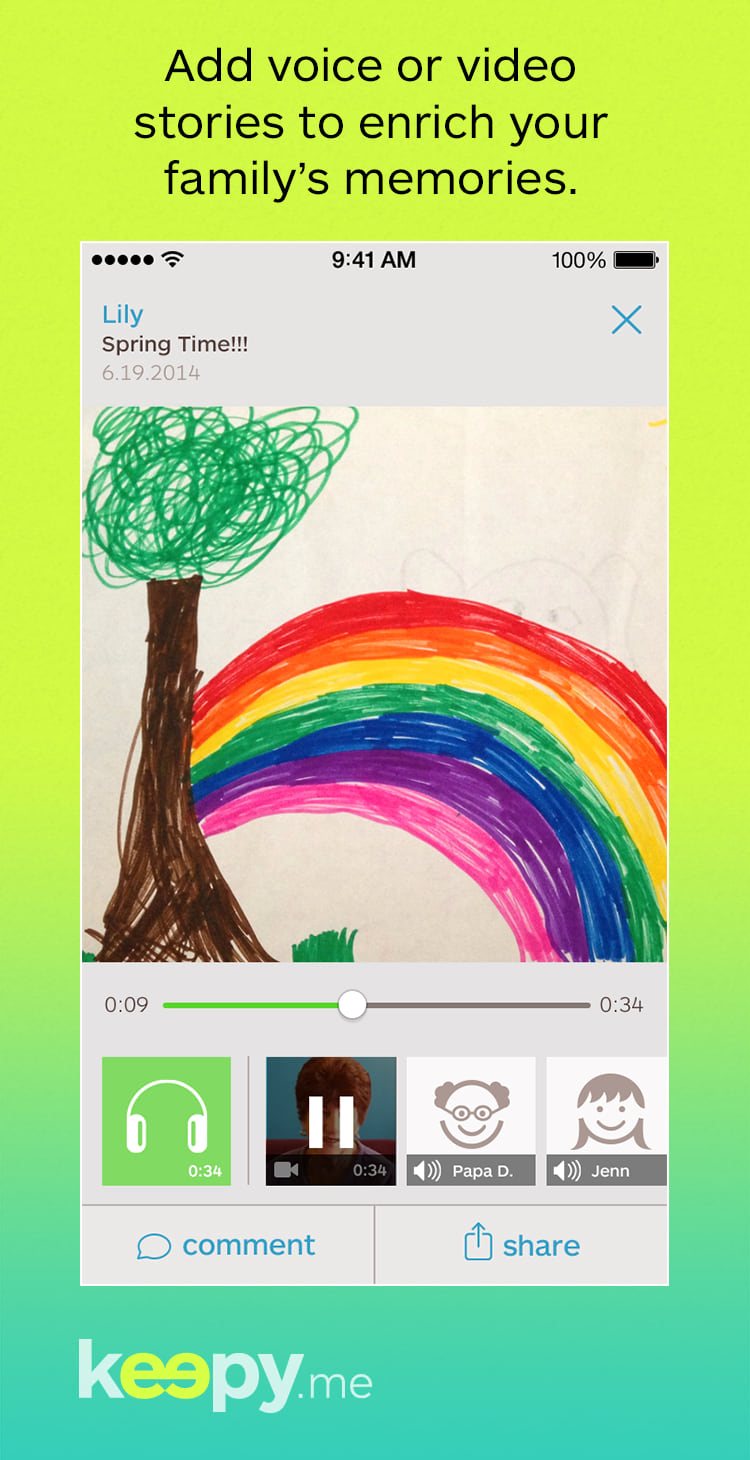
Out With the Old, In With the New: Clean Out Before Back-to-School
If you do have to tidy, make sure to do it well. For inspiration, check out KonMari consultant Patty Morrissey’s shed. She was recently featured in a January 2019 Money article, which detailed her decluttering journey. In an Instagram post, Patty shows the before and after pictures of “Operation Back to School.” The before photo shows a shed stacked with so much clutter that it’s impossible to move around:
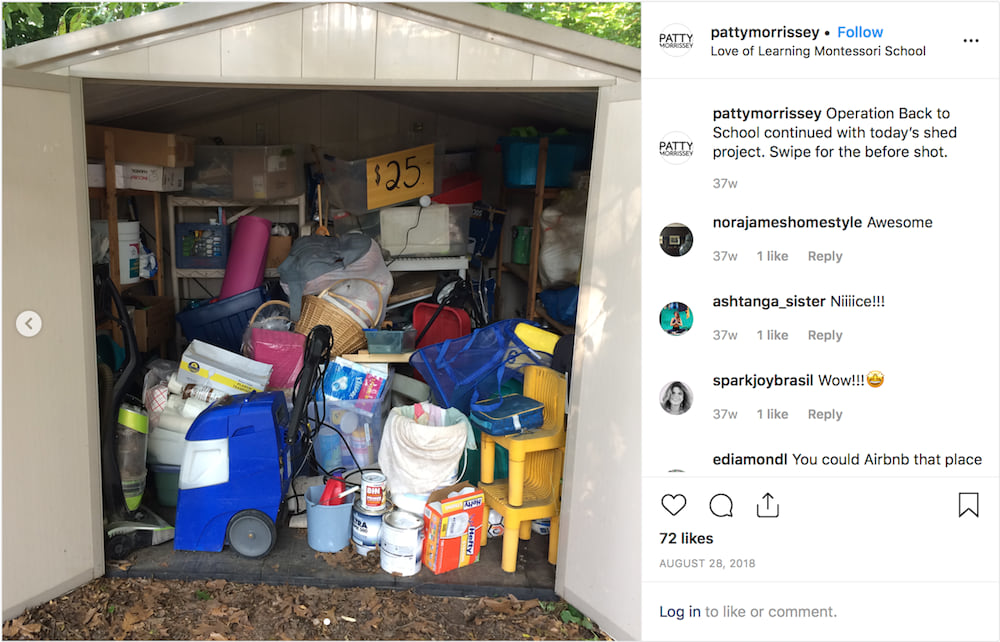
The after photo looks like this:
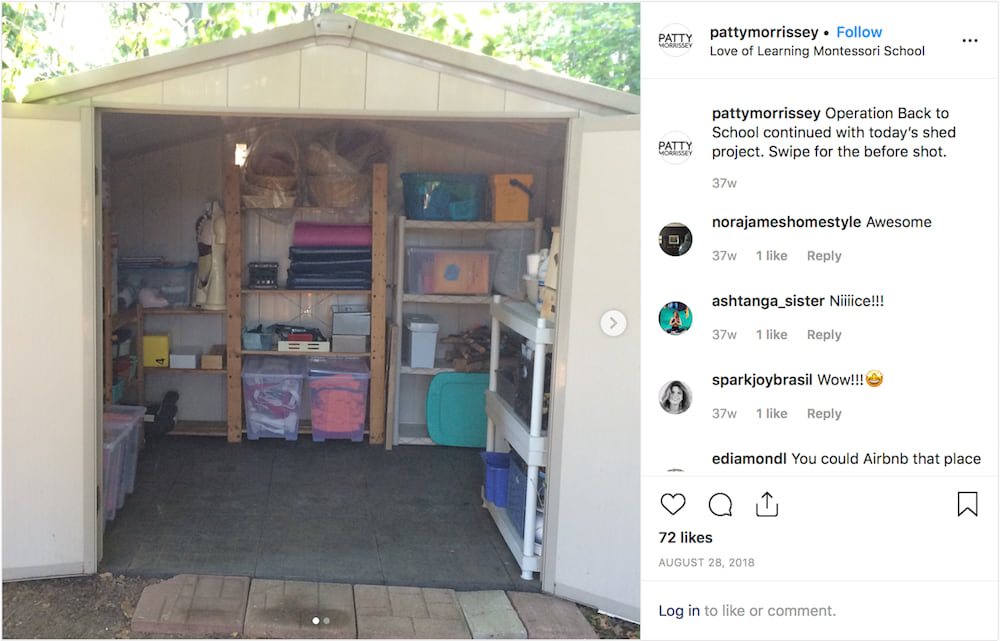
It’s not hard to imagine how Patty’s shed got to this point. Back-to-school shopping lists are large: jeans, hoodies, sweaters, and tops. Sneakers, belts, and hair clips. Notebooks, folders, and crayons. Juice boxes, lunch boxes, and backpacks. And these are only a few items from the internet’s most searched pages.
Since lists tend to be long, tidying up before back-to-school eases the transition into the school year. That’s why it’s often helpful to prepare your kids and your family before school starts. Co parents who must coordinate with their partner may also find that this process saves money, ensuring that no duplicate items are purchased.
After sorting through the storage shed, garage, or any other space that needs decluttering, try forming piles. One pile is for items that you can giveaway to the Goodwill or the Salvation Army; the other pile is for recycling or trash. After cleaning up, examine what’s left. If you have an incomplete set of crayons, either donate the incomplete set, or throw it away, and buy a new set. Following this process saves you money, allows you to organize, and maximizes space.
Have a Distraction-Free Zone or a Homework Hotspot
The Princeton Review found that distractions coming from the kitchen while one parent cooks, or from the loud television across the hall, can distract children from their homework. For adults, it takes about 25 minutes to return and refocus their mental energy back to their task. Experts say that for children it takes even longer.

What to Do With All Those Digital Photos?
You probably have a lot of photos on your phone. In order to organize these memories, follow this 3-step process:
- Eliminate duplicates and unflattering photos
- Purge blurry, overexposed, and underexposed photos
- Curate and organize photos by year, event, or location
Following this 3-step method makes room for more memories, and it frees up your phone’s storage. Share your curated digital photos with friends and family. The more you eliminate, delete, curate, and declutter photos, the stronger your connection will be to your precious memories.
Consider These Additional Steps for Older Photos, Courtesy of ArtPix 3D
Courtesy of ArtPix 3D
For Decluttering Inspiration, Listen to These Consultant Stories. But Remember: Think Ongoing Process, not Once-A-Year
Almost all KonMari consultants discuss how the KonMari Method has changed their lives and the lives of their clients. As one consultant said about her clients after decluttering, they experienced “this great sense of lightness. It’s a really beautiful thing.”
As artwork, drawings, paintings, images, and photos pile up, the need to declutter photos and purge digital photos becomes more important than ever. The KonMari consultants praise decluttering because it gave them a sense of freedom. As consultant Amanda Jefferson says, “joy to me feels––it’s not euphoric. It’s not happiness. It’s freedom.”
Body, Mind, and Soul
Your space and your mind are connected. The KonMari consultants emphasize that freedom comes from decluttering your space and your sentimental clutter. As San Francisco-based consultant Jessica Bowmer says, “having a cluttered space” translates into “having a cluttered mind.”
Whatever year your child is about to embark on in school, or whatever organization situation you’re facing, Keepy wishes you and your family an awesome, safe, and successful school year! We hope you found these decluttering tips helpful!
